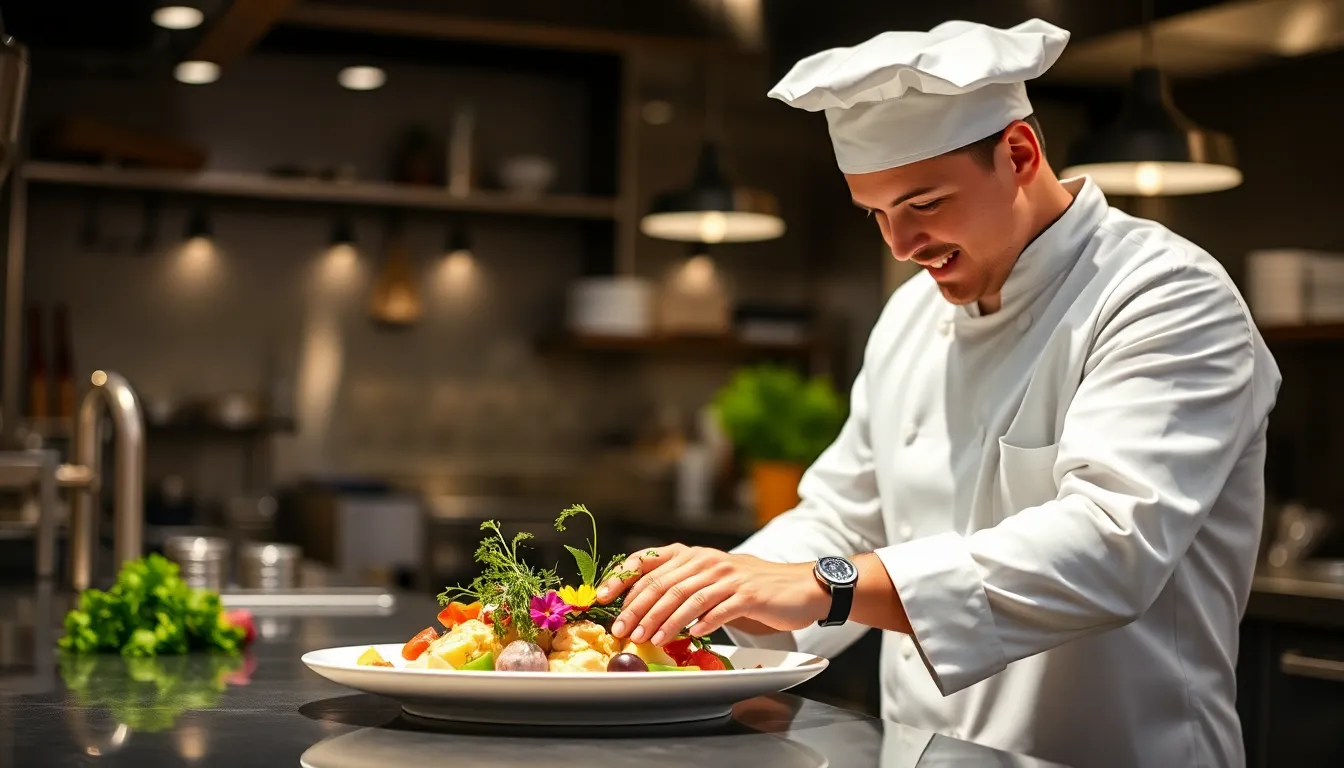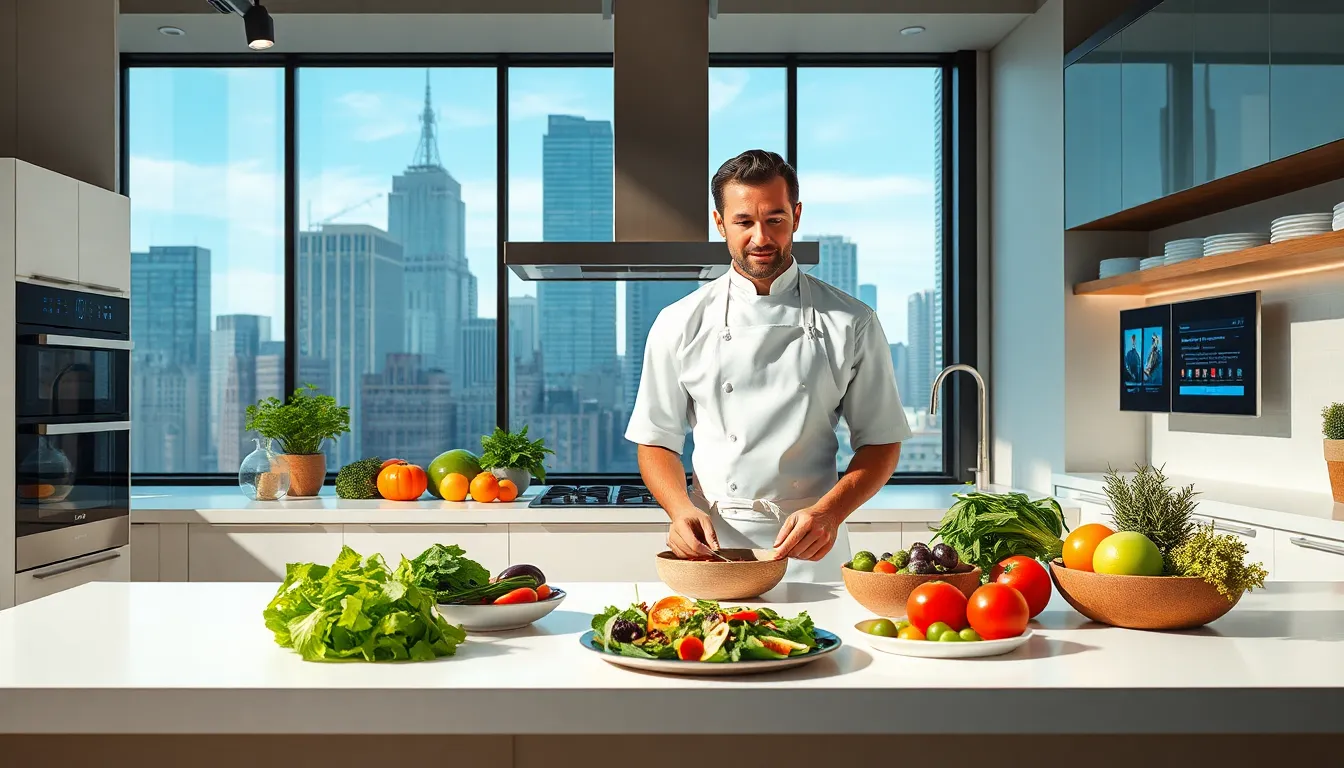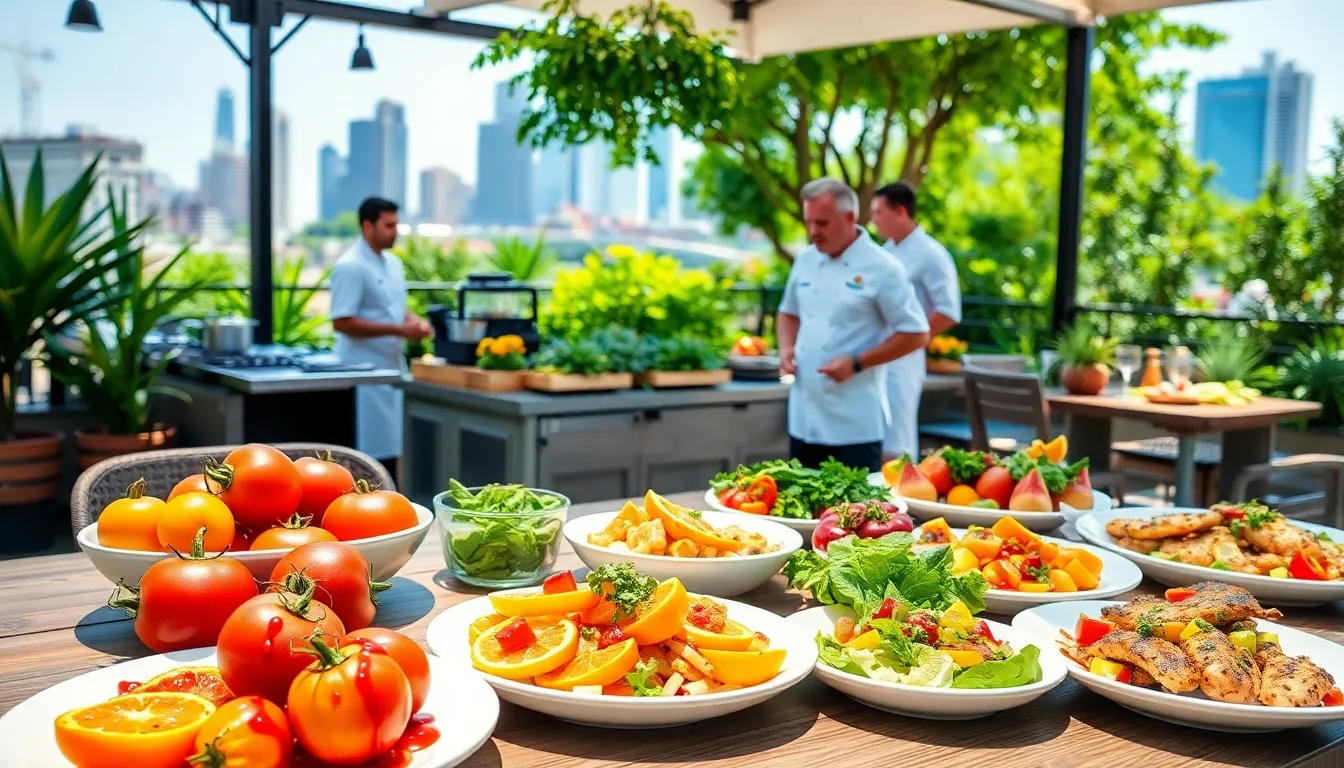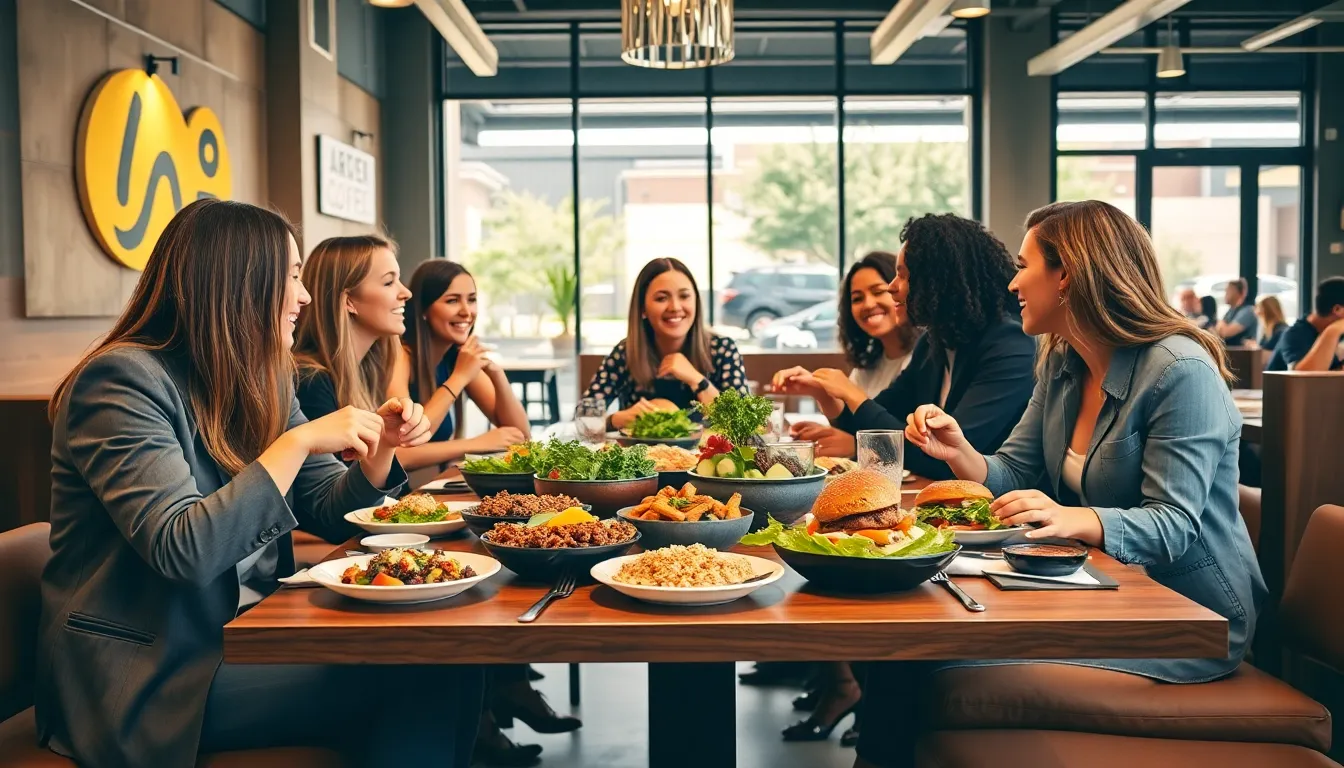Table of Contents
ToggleIn a world where food is not just fuel but an art form, culinary arts reign supreme. It’s a delicious blend of creativity and technique that transforms everyday ingredients into culinary masterpieces. Picture a chef dancing around the kitchen, wielding a knife like a magician’s wand, turning mundane meals into gastronomic wonders. Who wouldn’t want to be part of that enchanting experience?
Overview of Culinary Arts
Culinary arts encompasses the art and science of preparing, presenting, and serving food. It blends creativity with precise techniques to create memorable dining experiences.
Definition of Culinary Arts
Culinary arts refers to the practice of cooking and baking. It includes various techniques, traditions, and presentations associated with food preparation. Chefs and cooks utilize skills ranging from knife techniques to flavor pairing. Culinary arts also embrace cultural influences, showcasing diverse cuisines from around the world. Mastering culinary arts often requires formal training, but passion and practice play vital roles.
Importance of Culinary Arts in Society
Culinary arts holds significant value in society. It fosters cultural connection through the sharing of traditional dishes. Restaurants and dining establishments serve as gathering places, strengthening community bonds. Additionally, culinary arts contribute to local economies, generating jobs in food production and hospitality. Nutritional awareness shapes healthy eating habits as chefs incorporate wholesome ingredients. Culinary professionals also inspire creativity in home cooks, elevating daily meals and encouraging culinary exploration.
Key Skills in Culinary Arts

Culinary arts require a unique set of skills. Mastery of these skills enables culinary professionals to create memorable dining experiences.
Cooking Techniques
Cooking techniques form the foundation of culinary arts. Techniques like sautéing, roasting, and poaching differ in style and outcome. Sautéing accomplishes rapid cooking, retaining flavor and texture. Roasting delivers depth through caramelization, providing layered tastes. Poaching gently cooks food in simmering liquids, enhancing subtle flavors. Understanding these methods empowers chefs to manipulate ingredients effectively. Each technique influences the final dish, showcasing the chef’s creativity and precision.
Presentation Skills
Presentation skills significantly enhance the dining experience. A well-presented dish captivates the diner’s eye and stimulates appetite. Techniques such as garnishing, plating, and color balance play vital roles in aesthetic appeal. Garnishing adds fresh herbs or edible flowers for a vibrant touch. Plating involves arrangement, ensuring each element on the plate complements the others. Color balance creates contrast, making food visually inviting. Chefs strive for visual harmony, recognizing that appealing presentation makes a lasting impression.
Culinary Arts Education
Culinary arts education provides aspiring chefs with essential skills and knowledge. It encompasses both theoretical and practical training.
Culinary Schools and Programs
Culinary schools offer various programs tailored for different skill levels. Students can choose from associate degrees, bachelor’s degrees, and diploma courses. Each program emphasizes core competencies such as knife skills, food safety, and flavor profiles. Renowned institutions combine classroom learning with hands-on experience, allowing for real-world application. For instance, schools often include internships in restaurants or catering companies to enhance practical training. The diversity in programs caters to specific culinary interests, such as baking and pastry arts or international cuisine.
Certifications in Culinary Arts
Certifications in culinary arts validate a chef’s expertise and enhance career prospects. Numerous organizations provide credentialing, including the American Culinary Federation (ACF). Earning a certification often requires passing an exam and demonstrating specific skills. Certifications range from basic levels to specialized ones, such as Certified Executive Chef or Certified Pastry Chef. They signal proficiency to potential employers, often leading to better job opportunities and higher salaries. Pursuing certification can also encourage ongoing education, ensuring culinary professionals stay current with industry trends.
Trends in Culinary Arts
Culinary arts continuously evolve, influenced by sustainability and global cuisine. These trends reshape how chefs and home cooks approach food preparation and presentation.
Sustainable Practices
Sustainable practices increasingly hold importance in culinary arts. Chefs prioritize farm-to-table concepts, sourcing ingredients locally to reduce carbon footprints. Using seasonal produce enhances flavor while supporting local farmers. Furthermore, minimizing food waste has become a goal, with techniques like composting and creative repurposing of leftovers. Eco-friendly packaging options gain popularity among restaurants, reflecting a commitment to environmental responsibility. Chefs and diners alike embrace plant-based diets, recognizing their benefits for health and sustainability.
Global Influences on Cuisine
Global influences infuse culinary arts with diverse flavors and traditions. Chefs draw inspiration from international cuisines, merging techniques and ingredients from various cultures. Fusion cuisine exemplifies this trend, blending distinct culinary styles to create innovative dishes. Popular dishes like Korean tacos and sushi burritos showcase how cultures intersect in food. Moreover, the rise of social media amplifies these influences, allowing chefs to share their creations and experiences worldwide. Food festivals and international culinary competitions further celebrate diversity, exposing diners to new tastes and experiences.
Career Opportunities in Culinary Arts
Culinary arts offers a wide range of career paths for individuals passionate about food and cooking. Professionals can explore various roles that highlight their skills and creativity.
Job Roles in the Industry
Culinary arts encompasses diverse job roles, each contributing uniquely to the industry. Chefs create and prepare dishes in restaurants, hotels, and catering companies. Pastry chefs specialize in desserts and baked goods, often designing intricate cakes and confections. Line cooks assist chefs by managing specific areas within the kitchen, focusing on efficiency and consistency. Food stylists enhance food presentation for photography and media, ensuring visual appeal. Additionally, food critics evaluate dining experiences, providing insights and opinions that shape culinary trends.
Growth and Employment Prospects
The culinary arts sector shows promising growth and employment opportunities. According to the U.S. Bureau of Labor Statistics, job openings for chefs and head cooks are projected to increase by 6% from 2019 to 2029. This growth is fueled by a rising demand for dining establishments and creative cuisine. Trends such as health consciousness, sustainability, and the popularity of diverse cuisines drive the need for skilled culinary professionals. Moreover, individuals with specialized training and certifications often find enhanced job prospects, as employers seek qualified talent in a competitive market.
Culinary arts represent a vibrant intersection of creativity and skill that transforms food into an experience. As chefs continue to innovate and embrace sustainability they not only elevate dining but also foster community connections. The diverse career paths available in this field showcase the demand for skilled professionals who can adapt to evolving culinary trends.
With a focus on education and certification aspiring chefs can confidently step into a world rich with opportunities. Ultimately the culinary arts will continue to inspire and unite people through the universal language of food.




